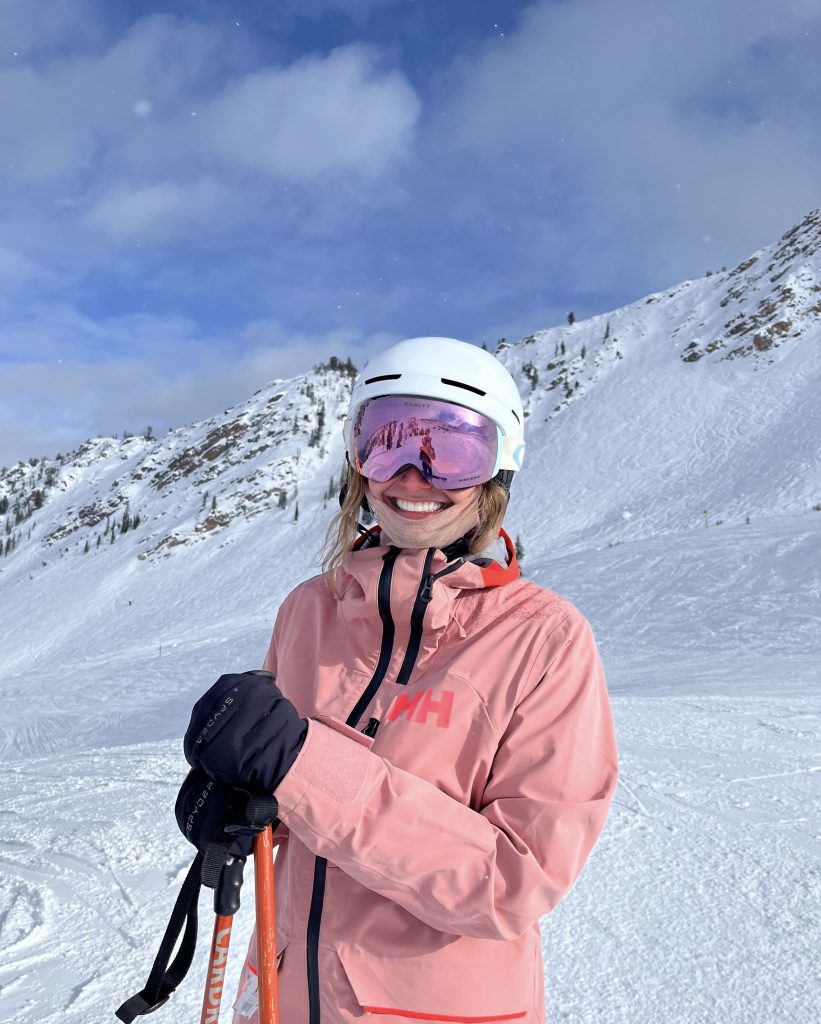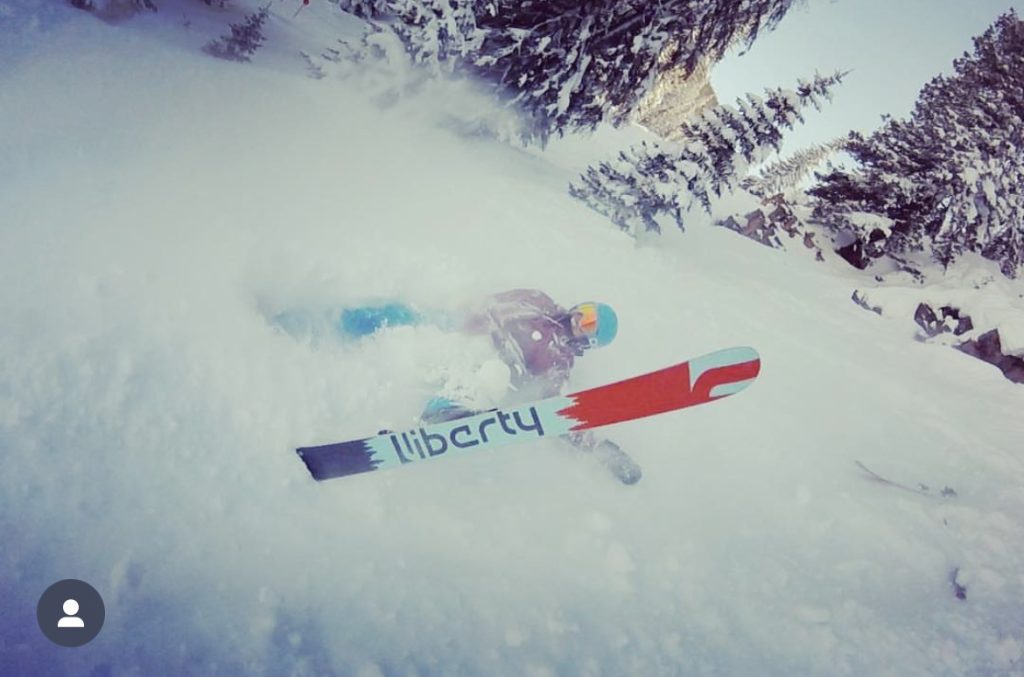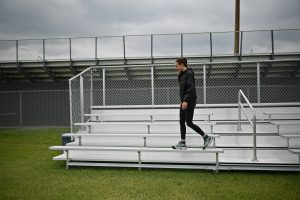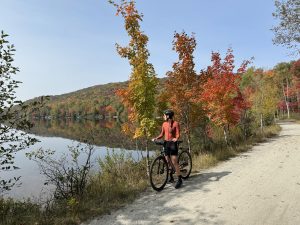All about skiing – from Sarah, ski coach and chiro
Sarah dives into exercises, injuries and her own skiing experience to give you tips to finish out your ski season strong!
Sarah initially got into skiing in Ontario starting as a ski racer on the slopes of Blue Mountain. Her practice philosophy is that movement is medicine and to provide evidence-based care to each of her patients. Check out her Q&A below!
If you had to pick 2-3 exercises that you think all skiers would benefit from, what would those be?
It’s challenging to make broad generalizations because I believe exercise selection should be tailored to individuals and the specific demands of the sport. The exercises chosen for a ski racer, for instance, might differ from those for a park skier.
However, for the everyday moderate to advanced weekend skier, here are my top recommendations:
- Wall sit
- Bulgarian split squats
- Single Leg Romanian Deadlift (SL RDL) or conventional deadlifts
I recently reintroduced deadlifts into my training routine, and it has significantly alleviated the low back pain I used to experience after full days of skiing. The back is often overlooked when it comes to skiing exercises, but it plays a crucial role for skiers, so train your back!!
What are the most common overuse injuries you see in your skiing teams?
YOUTH ATHLETES:
I coach U14 and under – in this age group, overuse injuries are relatively uncommon, partly because of their age and partly because they are typically training for other sports simultaneously, so they are likely just really well conditioned. Traumatic injuries, such as concussions and various bone fractures (wrist, shin, thumb, and femur), are more typical. These injuries often result from high speed falls or collisions during events or training.

When I do see overuse injuries, the most prevalent is mid to lower back strains. Alpine Canada has national equipment rules, which state that it is highly recommended for U14 and older athletes to wear back braces during races. Some ski clubs even mandate the use of back braces during training.
The primary rationale behind implementing back braces is to safeguard athletes from severe spinal injuries, such as paralysis or fatality. While the idea of using a brace is commendable, my first hand experience with the athletes as well as an exploration of the literature on back braces, reveals limited evidence supporting their effectiveness in reducing the risk of severe spinal injuries. In fact, it seems that the added rigidity in the thoracolumbar spine from the brace may contribute to torso and low back strains and overuse pain especially if the brace is ill-fitting (which we see a lot with kids using hand-me down equipement).
ADULT ATHLETES:
For adult athletes, overuse knee injuries top the list, followed by shoulder, low back, and leg/foot injuries. The sport’s rigid and heavy equipment, coupled with its demand for significant muscular endurance, contributes to these common overuse injuries. However, through proper off-hill training and preparation, along with the use of well-fitted equipment, the occurrence of overuse injuries can be significantly reduced and rehabbed!
What are the top 2 tips you would give to skiers in the middle of the season to make sure they stay feeling good throughout the spring ski season?
While I personally lean towards hot yoga mid-season, incorporating various mobility exercises targeting the hips, ankles, and both the lower and upper back can keep the skier feeling good through spring.
Several factors on the ski hill contribute to muscle stiffness and discomfort. These include:
- rigid weather
- prolonged training periods (often spanning an entire day on the slopes)
- the weight of ski equipment
- the extensive time spent in transit (a total of 4 hours for a day trip from Calgary to Lake Louise)
Additionally, the gear itself imposes extra loads on the body and puts us in positions we are not accustomed to. All these elements contribute significantly to the mid-season feelings of stiffness and pain.
Prioritizing mobility work during these periods can prove to be highly beneficial!
Are there other aspects of skiing that people seem to forget about?
From my work as a ski instructor I find that with beginners, the primary hurdle often lies in the physical demands of the sport.
Skiing basically entails sustaining a squat position for extended periods, and for those who haven’t adequately prepared their bodies, it can be quite exhausting. Contrary to popular belief, skiing is not as effortless as it appears.
I also strongly believe that everyone needs a ski lesson.
Skiing can be very dangerous and knowing the basics like how to stop is CRUCIAL for your safety and others. I have seen way too many accidents with people who shouldn’t have been on the hill. Please, please, please do not get on a chair lift unless you are comfortable with stopping!! A good instructor will get you comfortable with this in an afternoon.
Falling is fun, falling is literally part of the sport. I fall all the time because I’m having fun and trying new things. Be okay with falling. Falling is not associated with how good you are at the sport, in fact some say if you’re not falling, you’re not trying.
You fall, you laugh, you get up, you get better.

The cold can definitely be a drawback and when you are not prepared for the cold it can be really dangerous. However, investing in warm and quality ski gear can be a game-changer. When it comes to skiing I think investments made into good equipment can be revolutionary, it was for me anyways when I invested in boot heaters. Also ski equipment lasts forever so just buy the nice, warm perfectly fitting ski boots, OKAY!?
What are the biggest takeaways you’ve gained from your own ski career and training history?
The most profound insights skiing offered me about myself are resilience, loyalty, and a deep appreciation for nature.
Having spent extensive time in ski boots, injuries were inevitable. My passion for the sport has not only taught me self-care (nutrition, exercises off-hill, sleep, etc) but also the importance of seeking help and cultivating patience with my body. It underscored the belief that practice and consistent effort lead to perfection. Training as a racer demanded hard work, and the gratification of improving each season and achieving podiums was immensely fulfilling.

Transitioning from racing to park and hitting rails was mentally challenging, but my determination to persist and improve prevailed. The magical experience of successfully hitting a rail for the first time was earned through dedication and perseverance. It’s these collections of experiences that teach us how adaptable and strong we really are, my ego has proof I can do anything thanks to this sport!
My aspiration is to ski until I’m 85 and to be able to pass on this love for my sport to my children and their children.
This commitment has fueled my appreciation and advocacy for the environment and the protection of our winters. My personal habits reflect a strong environmental consciousness, and I strive to educate others on this subject to try and mitigate the effects of global warming. Additionally, I actively support organizations like Protect Our Winters (POW) through donations. It’s nice to have something bigger than yourself to care about 🙂
Where can people reach you and learn more about your chiro practice and skiing?
Connect with Sarah on Instagram: Sarahthechiro
See Sarah for chiro: Eminent Wellness
Request a ski specific hot yoga class with Sarah @: Hotshop Victoria Park


